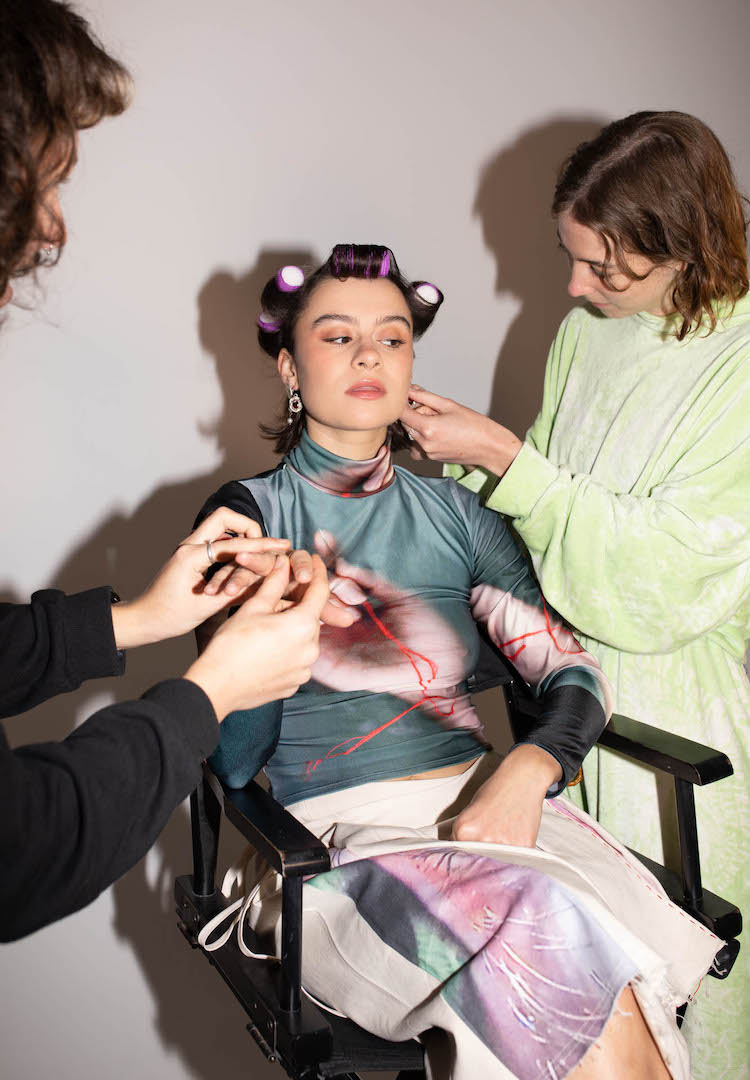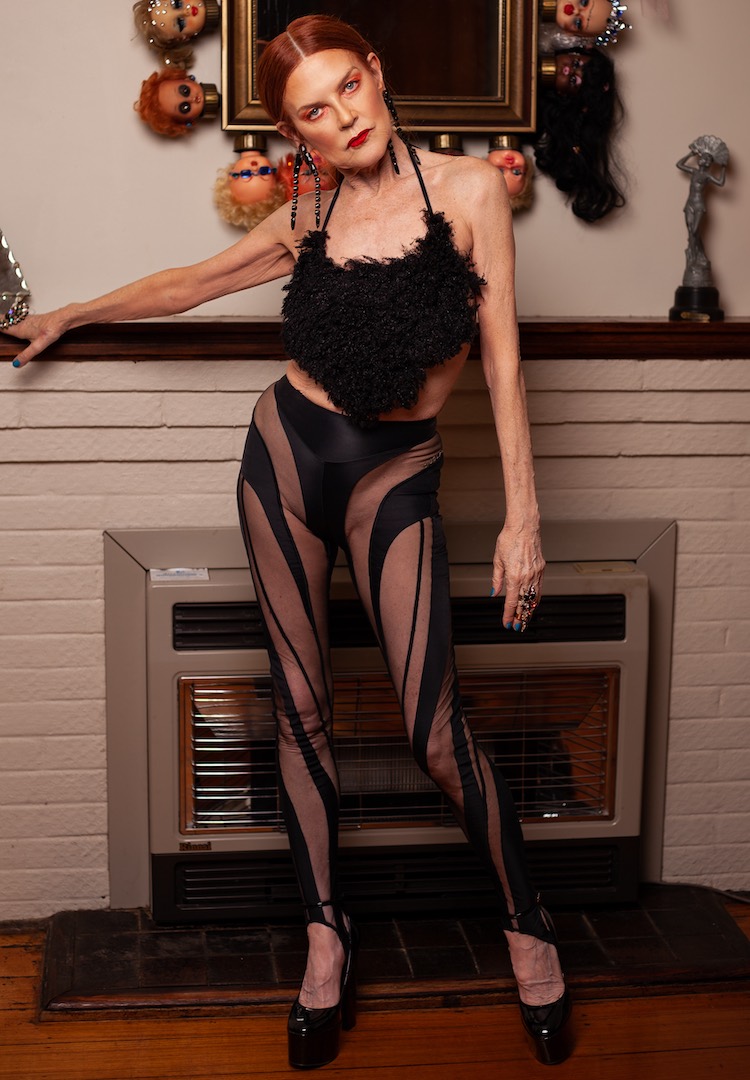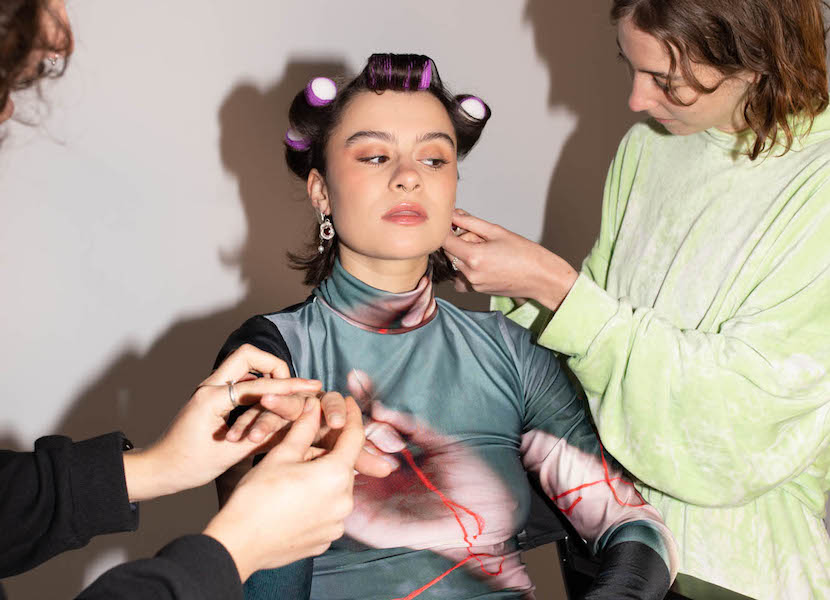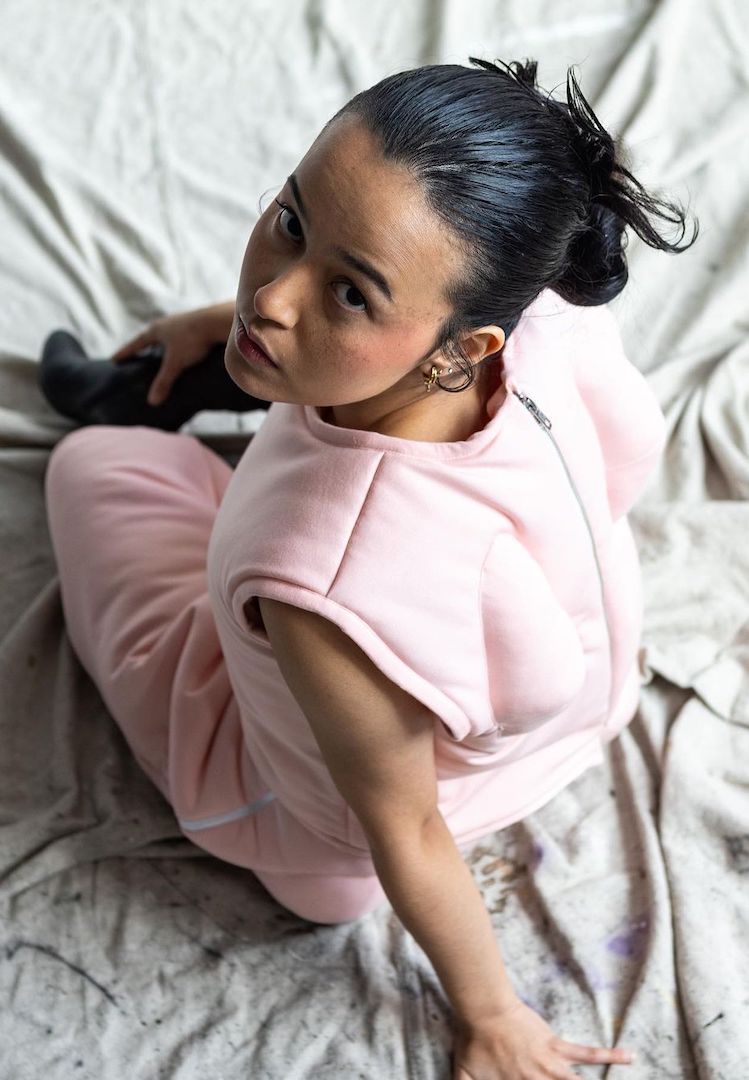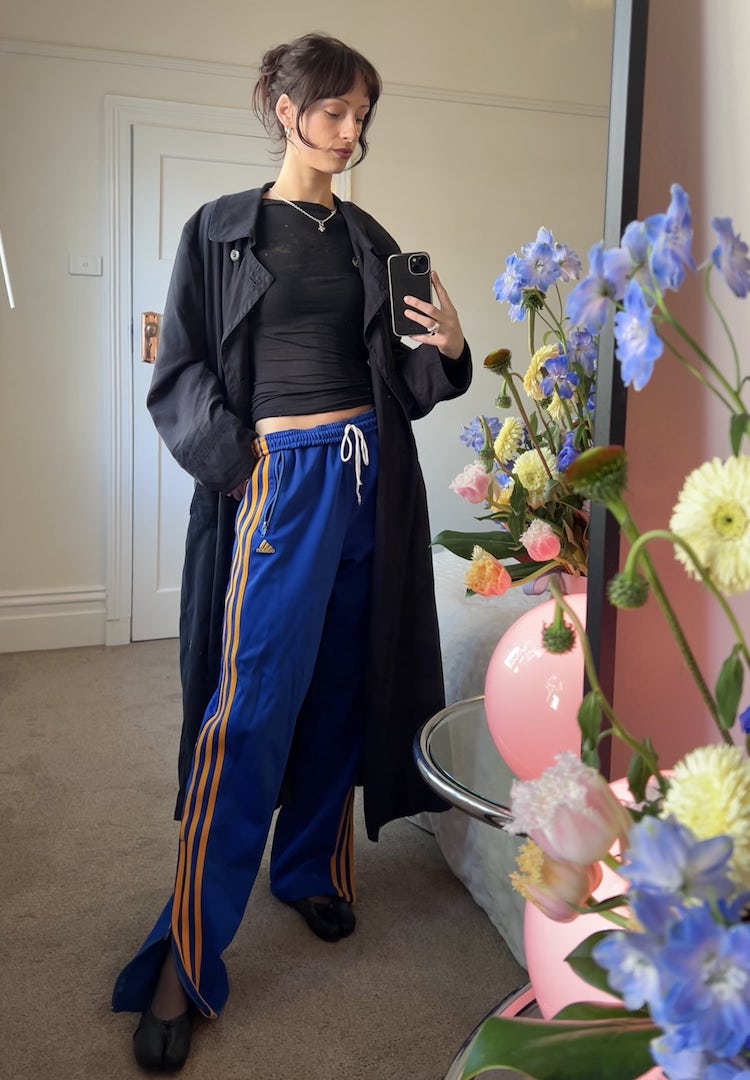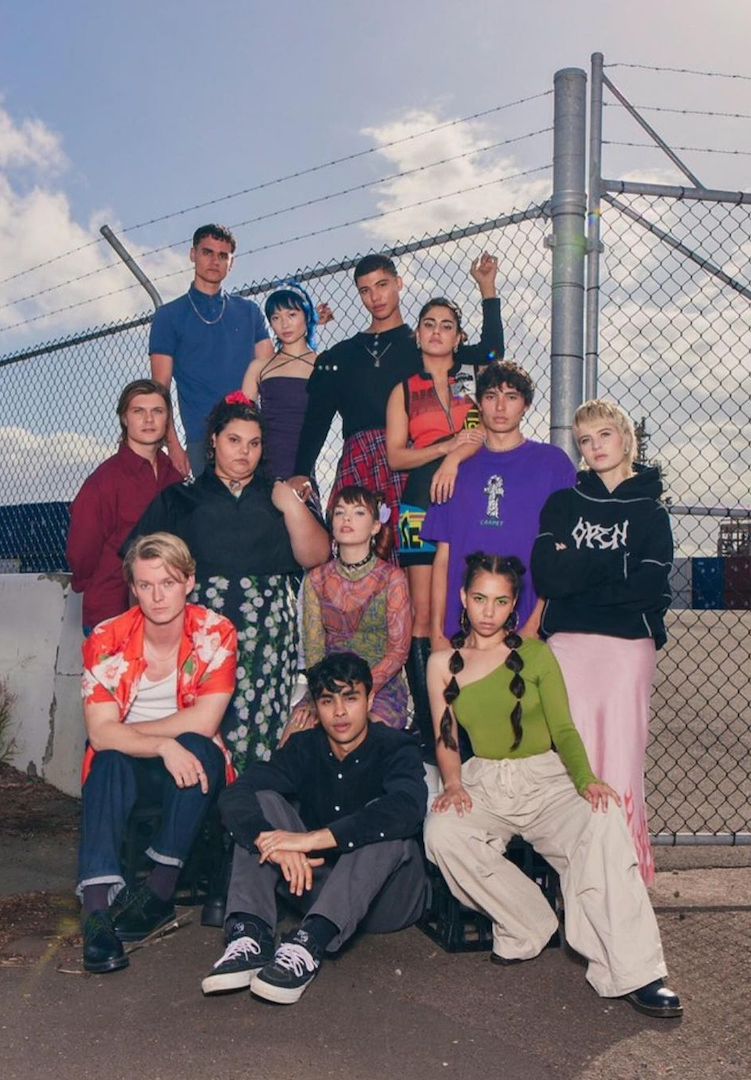Naarm label Pocket Money makes experimental clothing from scraps and remnant fabric
PHOTOGRAPHY BY Kristen Augeard
WORDS BY IZZY WIGHT
“I love pieces to be constructed well and I also love embracing garment mistakes.”
Naarm designer Jedda Bahloo made her runway debut at this year’s Melbourne Fashion Week Student Collections Runway, where models wore garments made of material scraps and discarded clothing swatches. The pièce de résistance was a multicolour, floor-length trench coat, crafted from meticulously sewn, tiny fabric pieces. “I wanted to use my voice to make a statement about ethics and sustainability with a particular focus on waste and human labour,” she explains.
For more fashion news, shoots, articles and features, head to our Fashion section.
Since the M/FW show, Jedda has focused on finishing her final year of study while producing upcycled ready-to-wear under her label, Pocket Money. Looking to the future, Jedda says “I want to follow a non-normative brand practice, using my platform to create whatever I feel like making… if I am using my skills and creativity to make more garments in the world, I want to at least enjoy the making process”. Below, she tells the story of her label so far.
Tell us about you. What’s your fashion background?
View this post on Instagram
My earliest memories of fashion creation began when I was 12. My mum would take me to the tip and I would find garments I could transform into the pieces I couldn’t afford to buy from Supre. At the time, I got my mum to teach me how to sew, but I hated it and couldn’t finish anything.
After I graduated school, I worked for a few years before taking up a Diploma in Fashion Design (it was a toss-up between that or art), which allowed me to transition into uni because I didn’t get a score at school. I then moved from Meanjin (Brisbane) to Naarm (Melbourne) to go to RMIT, and have just graduated from there with my bachelor‘s degree!
How did the label get started? Talk us through the process and the challenges.
View this post on Instagram
I am currently barely off my feet as a label, though I started it… [to] share what I create. I love experimenting with scraps and secondhand materials and finding ways of elevating them… after uni, I found myself continuing to create in my spare time. In the process, my workspaces were getting more and more cluttered with pieces.
I needed a platform to share my work, as well as to allow myself to continue creating. From there, Pocket Money was born (sort of). It has been reasonably smooth going… so far, but the two main challenges I face are confidence and finances. Starting Pocket Money, I quickly realised that you have to really back yourself if you want to go further in the industry.
View this post on Instagram
It can be scary putting yourself out there, but it’s what you have to do to get seen! Finances are also a constant struggle for me, even using a lot of scraps, secondhand and remnant fabric. It can be really expensive to buy the materials, machinery, tools, website costs, fees and more! It helps that I have a part-time job (in hospo), so I would definitely recommend starting out with savings or another stream of income.
What were you trying to achieve from the project at the time? How has this evolved and what are you trying to communicate through the brand now?
In my collection Hmm… Must have missed it… Pt 1 and Pt 2, I wanted to use my voice to make a statement about ethics and sustainability with a particular focus on waste and human labour. These are two elements that I find are often hidden/forgotten within the fashion industry, and I wanted to make these realities incredibly clear… I used lots of scraps and industry waste (like haberdashery)… [and I was] inspired by toiles (garment mock-ups).
View this post on Instagram
I also inserted the human ‘maker’ into the collection, through high-quality body part material prints and handwritten garment notes. I want to follow a non-normative brand practice, using my platform to create whatever I feel like making. I know this can potentially keep my brand relatively small, but I don’t mind. If I am using my skills and creativity to make more garments in the world, I want to at least enjoy the making process.
Where did the name come from?
At the time the name ‘pocket money’ came into my head, I was with my old housemate at a photography exhibition and saw an image with a dollar sign. I thought ‘hmm… pocket money?’ and I quickly wrote it in my notes because I liked how it sounded.
View this post on Instagram
I felt it aligned with my values as a designer and maker, as I’m constantly looking at ethics and sustainability within the fashion industry and want my work to help garments and makers have value within the industry.
How would you describe Pocket Money to someone who’s never seen it before?
Hmm… I find it really hard to describe my work. I would maybe describe it as creative and wearable. I love pieces to be constructed well and I also love embracing garment mistakes. I am constantly trying to make pieces that last through seasons and trends.
What are you most proud of in your work on your brand?
View this post on Instagram
I think I am most proud of my ability to know what I like. It has taken a really long time for me to feel comfortable… taking creative risks. In my most recent collections, I felt like I had to convince many people around me that it was going to work and also look cool.
It is often hard… [to be] sure of your vision, and I still struggle, but I’m so much better than I have ever been. Now I’m so much better at looking at my work and saying something like “No, the black doesn’t work for me” and trusting my own taste, rather than going with what is ‘in fashion’ or being influenced by my peers.
What about the Australian/New Zealand creative scene needs to change?
View this post on Instagram
There is a lot of amazing stuff happening in the Australian and New Zealand creative scene right now, and it’s so nice to see how locally-made fashion is becoming more popular.
I think in terms of change though, the whole fashion industry needs to change its structure to be even close to becoming ethical and sustainable. I find in the local scenes, many people… forget about other elements such as wearability, longevity, fabric content and who is actually making the garments.
Who is in your wardrobe right now?
So many pieces in my wardrobe are either secondhand or [made by me]! Sometimes when I have the urge to buy something new, I think ‘can I make it instead?’ and spend time creating something that I personally love. That being said, I have a small handful of designer pieces…
How can we buy one of your pieces?
View this post on Instagram
I have a little online shop, which is also linked to my Instagram, where I post whatever I have been making recently. So far, I am only selling online but will look into selling in person somewhere in the future!
Browse the full Pocket Money collection here.


